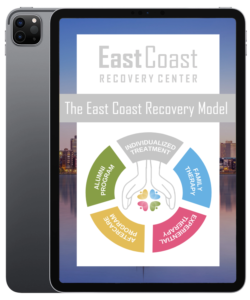Addiction is a challenging issue that takes time to break. Breaking an addiction requires acknowledging and accepting the problem, seeking professional help, exploring treatment options, and building a strong support system. It is possible to beat addiction and achieve long-term recovery with the necessary help and support.
While it’s commonly believed that creating a new habit takes roughly 21 days, studies have revealed that breaking a powerful addiction requires much more time than three weeks. The duration needed to overcome addiction can vary depending on several factors.
Understanding addiction is an essential first step in overcoming it. First, let’s understand addiction, its various types, and the cycle it involves. This will enable us to comprehend better why breaking an addiction can take varying amounts of time for different individuals.
This article will cover the general timeline for breaking addiction and the variables that may influence it. We strongly advise you to learn more about overcoming this crippling affliction if you or a loved one suffers from addiction.
What Is Addiction?
The American Society of Addiction Medicine defines addiction as a primary, chronic disease of brain reward, motivation, memory, and related circuitry. It is characterized by compulsive drug use, seeking, and continued help despite adverse consequences. Although addiction is a problem that can be treated, it takes a combination of medication, behavioral treatment, and the support of loved ones.

Types Of Addiction
There are several types of addiction, and the time to break each varies according to its kind. These types are:
- Co-occurring Addiction – This type of addiction involves the co-occurrence of substance and behavioral addiction.
- Behavioral Addiction – This type of addiction involves compulsive behaviors that can lead to negative consequences. Examples of behavioral addictions include gambling, sex addiction, and compulsive eating.
- Substance Addiction – This type of addiction involves the use of drugs or alcohol. It can include illegal drugs like cocaine, heroin, and methamphetamine or prescription drugs like opioids, benzodiazepines, and stimulants.
Factors Contributing To Addiction
Addiction is influenced by several factors, including:
- Genetics: A person’s propensity for dependence may be affected by genetic factors.
- Environmental variables: Stress, trauma, and peer pressure are ecological elements that might raise a person’s chance of developing an addiction.
- Brain chemistry: Changes in brain chemistry can lead to addiction. The brain’s reward system can be taken over by drugs and alcohol, which results in a dopamine rush that makes people feel happy and euphoric. Dopamine’s effectiveness diminishes over time, necessitating higher doses of medications or alcohol to have the same effect.
The Cycle Of Addiction
The cycle of addiction consists of four stages: experimentation, regular use, problematic use, and addiction.
- Experimentation: This stage involves trying a substance or behavior for the first time.
- Regular use: In this stage, the individual begins to use the substance or behavior regularly.
- Problematic use: At this stage, the individual begins to experience negative consequences due to substance or behavior use, such as financial problems or relationship issues.
- Addiction: At this stage, the person becomes physically and psychologically dependent on the substance or activity, making it the essential aspect of their life and frequently neglecting other crucial spheres like work, family, or health.
By understanding the factors that contribute to addiction and the cycle of addiction, individuals can take steps to prevent or overcome it.

Breaking An Addiction
How long does it take to break an addiction? Breaking an addiction can be a complicated process. But it is possible with the proper support and treatment. Below is the breakdown of critical steps involved in breaking an addiction.
1. Acknowledgment and Acceptance
Acknowledging and accepting the problem is the first step toward recovery. While many people could feel humiliated about their addiction, this can be a challenging step. But it’s crucial to remember that addiction is a disease, and asking for help is a sign of strength rather than weakness.
2. Seeking Professional Help
Once an individual has acknowledged and accepted their addiction, the next step is to seek professional help. Professional help can come in many forms, such as a therapist, counselor, or addiction specialist. These professionals can provide guidance, support, and treatment options to help individuals overcome their addictions.
There are many treatment options available for those striving to help with addiction, including:
- Detoxification
- Inpatient and Outpatient Treatment
- Support Groups
- Behavioral Therapy
- Medication-Assisted Treatment
3. Support Systems
Recovering from addiction requires a robust support system. This can include family, friends, and support groups. It is essential to surround oneself with positive influences and individuals who will support the recovery process. Support systems can provide encouragement and accountability and help individuals stay on track toward recovery.
Why 21 Days Are Not Enough
“It requires 21 days to establish a habit” refers to Dr. Maxwell Maltz’s book Psycho-Cybernetics, published in 1960. However, addiction is a more formidable force than a typical habit. Recent studies indicate that 21 days is insufficient for most individuals to effect any significant change. Studies have shown that altering repetitive behavior patterns takes around 66 days. A groundbreaking study conducted by University College London researchers revealed that the time required for individuals to transform their behavior patterns ranged from 18 to 254 days. The study also revealed that most people need at least two months to create new behavioral patterns.

Timeline For Breaking An Addiction
The process of overcoming an addiction is complex, and the length of recovery might differ based on several variables. Early, middle, and long-term recovery are the three stages that make up the general timescale for ending addiction.
- Early Recovery – In this stage, the individual focuses on detoxifying their body and adjusting to life without the substance. During the early recovery, the individual may experience physical and psychological withdrawal symptoms and may require professional help to manage these symptoms
- Middle Recovery – In this stage, the individual continues to work on maintaining their sobriety and building a support system. During this stage, the individual may continue attending therapy, support groups, and other activities to strengthen their recovery.
- Long-term Recovery – In this stage, the individual can maintain sobriety independently without professional help. During this stage, the individual has built a robust support system and has developed healthy coping mechanisms to manage triggers and cravings.
Factors That Can Affect The Timeline Of Breaking an Addiction
How long does it take to break an addiction? The simple answer is that there is no fixed timeline. Several factors can influence the timeline for breaking a habit. These are:
- The type of addiction
- The severity of addiction
- The individual’s overall health
- The individual’s motivation to recover
- The level of support and resources available
For instance, those with more severe addictions might need professional assistance for longer, and people with co-occurring mental health illnesses might need more treatment. Also, people with a robust support system and resource access may recover more quickly.
Case Studies
Case studies and examples can provide insight into the timeline for breaking an addiction and help individuals and their loved ones understand what to expect during recovery. Research by the National Institute on Drug Abuse found that the average length of stay in an inpatient treatment program for individuals with a cocaine addiction was 90 days. In contrast, the average length of outpatient treatment was six months. Another study found that individuals with an opioid addiction who received medication-assisted treatment were more likely to remain in treatment and achieve long-term recovery.
Staying Sober On Recovery
Continuing treatment is crucial for individuals in recovery, even after completing a formal treatment program. Treatment can take many forms, such as attending therapy sessions, support groups, or medication-assisted treatment. Continuing treatment helps individuals address any underlying issues that may have contributed to their addiction, learn healthy coping mechanisms, and stay accountable for their sobriety.
Identifying Triggers
Identifying triggers is a crucial step in staying sober. Triggers are situations, people, or places that can cause cravings or thoughts of using substances. Some common triggers include stress, social problems, negative emotions, or seeing someone else use drugs or alcohol. Identifying triggers can help individuals avoid or prepare for situations that may lead to relapse.

Developing A Support System
Developing a support system is an essential part of staying sober. A support system can consist of friends, family members, peers in recovery, or professional support. A support system provides individuals with a network of people who understand and can help them through recovery challenges. It’s vital to communicate openly and honestly with the support system and lean on them for help when needed.
Creating A Relapse Prevention Plan
While avoiding triggers and maintaining a solid support system is essential, relapse is still possible. Creating a plan for relapse prevention can help individuals stay on track and manage any setbacks. The plan should include the following:
- Specific strategies for managing triggers.
- Coping with cravings.
- Reaching out for help when needed.
The program should also have a list of emergency contacts, such as a therapist or support group leader, in case of a relapse.
Drug Use & Alcohol Addiction Treatment Programs in Boston, Massachusetts
If you or a loved one is stumbling with addiction, know you are not alone. Recovery is possible, and resources are available to help you. East Coast Recovery is a reputable addiction treatment facility in Boston, Massachusetts, offering comprehensive treatment programs tailored to each individual’s needs.
At East Coast Recovery in Boston, Massachusetts, we understand the challenges of addiction and have a comprehensive approach to individualized care for addiction. Contact us today if you would like more details on our treatment options or would like to speak with one of our admissions counselors.











